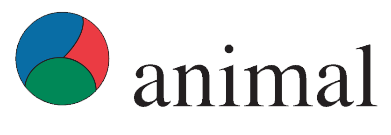Document type : Article published in Le Paysan Breton
Author : Bernard Laurent
Preview: Locomotive disorders, lameness and hoof injuries account for approximately 8-16% of the reasons for culling.
A study has shown a predominance of lameness in gilts. "The U-shaped curve during gestation can lead to mineral deficiencies in these young animals, as they still need minerals for their growth," says Jeanne Dupuis, a veterinarian with the Cristal network.
Quarantine, following transport and mixing, is a critical phase for mycoplasma arthritis, even more so if conditions are crowded. "Stricter rationing in late gestation is statistically associated with herds with high locomotive disorders. Weaning and grouping is a high-risk phase (fighting, weakened animals). Lameness is less frequent on straw than on slatted floors. Large dynamic Dac groups are more at risk. Dirty and slippery floors encourage problems. "Good ventilation and periodic disinfection are necessary."
Zinc plays an important role
A correctly formulated, balanced ration that meets the needs of the animals and has the appropriate essential-nutrient, vitamin, mineral and trace element content is essential for good growth and optimal functioning of the legs and hooves. Particular attention should be paid to trace elements (copper, iron, manganese, zinc, molybdenum, chromium, fluorine, silicon and selenium), which are essential for the proper functioning of the body. They are closely linked to hoof-horn development, ossification and limb growth. Zinc plays an important role in the ossification and healthy growth of the horn. Zinc deficiency leads to brittleness of the horn, changes in colour and keratinisation of the skin. On the other hand, an excess of zinc leads to a loss of appetite and arthritis.
Chelates
"There is a lot of evidence that chelates, organic forms of trace elements, have the best bioavailability. Excess protein can lead to laminitis. Antiseptic and hardening baths (foot baths) are indicated for farms with problems. "Hoof trimming can also be considered, and is more commonly practiced in Denmark.
Feeding regimes (Dac) and watering rates are not reliable indicators of locomotive problems due to the high variability in behaviours between individuals. "Smart tools, such as accelerometers, may provide farmers with information on issues in the near future.




